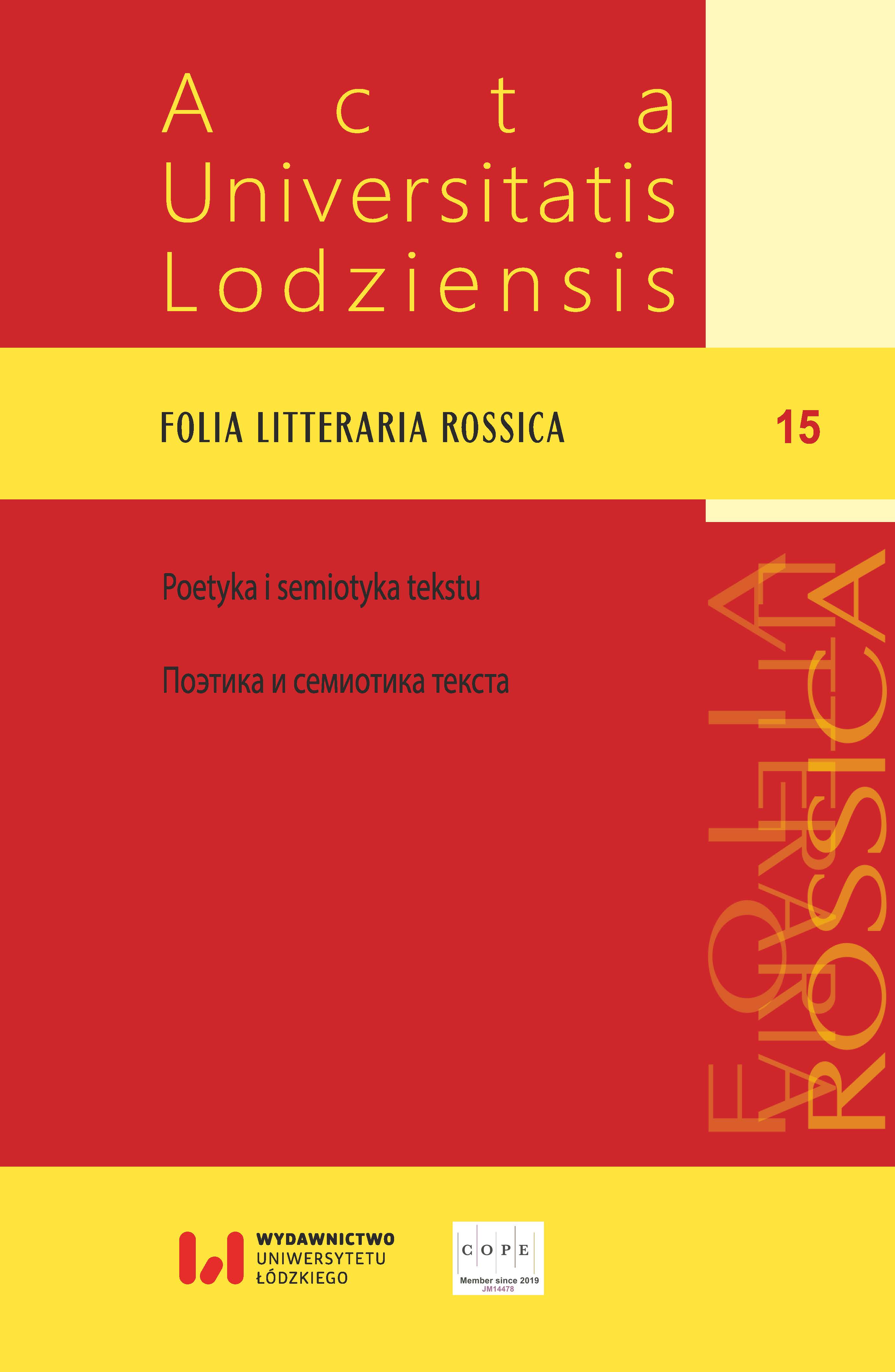The Stylistic Signs of a Polyphonic Text
DOI:
https://doi.org/10.18778/1427-9681.15.23Keywords:
polyphonic text, semiotic model, style, technique of repetition, stylistic homonymyAbstract
In a polyphonically-organised text characterised by weakened ties between the utterance, its subject, object, and meaning, the style changes its functional vector. In polyphony, the semiotic value of the category of style decreases due to stylistic homonymy. The style ceases to perform a characterological function, hence it is difficult, and in some cases even impossible, to define the hero according to the stylistic indicators of his/her speech. The use of undifferentiated – without attachment to certain subjects and objects – stylistic indicators is a typologically-marked phenomenon inherent in the polyphonic aesthetic system. However, the same element can be encoded by several aesthetic codes: universal, typological, and individual. The degree of stylistic homonymy is in direct proportion to the degree of the polyphonicity of the text. In case an utterance “wanders” freely between different subjects and is overflown with meanings, the technique of repetition, in addition to stylistic homonymy, becomes an integral feature of a polyphonic text as an extremely economical way of generating new meanings, being a tool of foregrounding both secondary (from the standpoint of linear development of the text) and initial meanings. Repetition entails a change in both the pragmatic and the conceptual meaning of the utterance. Thus, style in polyphony acts as a meaning-forming and meaning-transforming factor and takes direct rather than indirect part in creating nuclear meanings of the text.
Downloads
References
Bakhtin, Mikhail M. Problemy tvorchestva Dostoevskogo. Leningrad: Priboi, 1929.
Google Scholar
Dal, Vladimir I. Tolkovyi slovar zhivogo velikorusskogo yazyka: v 4 t. Vol. 4. Moskva: Tipografiya T. Ris, 1866.
Google Scholar
Dostoevskii, Fedor M. Polnoe sobranie sochinenii: v 30 t., ed. V. G. Bazanov. Vol. 1–30. Leningrad: Nauka, 1972–1990.
Google Scholar
Downloads
Published
How to Cite
Issue
Section
License

This work is licensed under a Creative Commons Attribution-NonCommercial-NoDerivatives 4.0 International License.












